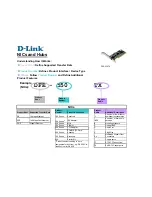
1-31
To do…
Use the command…
Remarks
Specify the routing domain
authentication mode and
password
domain-authentication-mode
{
simple
|
md5
}
password
[
ip
|
osi
]
Required
No routing domain
authentication is configured by
default.
Configuring System ID to Host Name Mappings
In IS-IS, a system ID identifies a router or host uniquely. A system ID has a fixed length of 6 bytes. When
an administrator needs to view IS-IS neighbor information, routing table or LSDB information, using the
system IDs in dotted decimal notation is not convenient. To solve it, you can configure the mappings
between system IDs and host names since host names are easier to remember and use.
Such mappings can be configured manually or dynamically. Note that:
z
Using the
display isis lsdb
command on a router configured with dynamic system ID to host name
mapping displays router names rather than system IDs.
z
If you configure both dynamic and static system ID to host name mappings on a router, the host
name for dynamic system ID to host name mapping applies.
Configuring a Static System ID to Host Name Mapping
Follow these steps to configure a static system ID to host name mapping:
To do…
Use the command...
Remarks
Enter system view
system-view
––
Enter IS-IS view
isis
[
process-id
]
[
vpn-instance
vpn-instance-name
]
––
Configure a system ID to host
name mapping for a remote IS
is-name map
sys-id
map-sys-name
Required
A system ID can only
correspond to a host name.
Configuring Dynamic System ID to Host Name Mapping
You need to configure a static system ID to host name mapping for any other router in a network. When
a new router is added into the network or a mapping needs to be modified, you need to perform
configuration on all routers.
In this case, you can configure dynamic system ID to host name mapping. To do so, you need to
configure a host name for each router in the network. Each router advertises the host name in dynamic
host name CLVs to other routers. At last, all routers in the network have all the mappings to generate a
mapping table.
In addition, you can configure a name for the DIS in a broadcast network to help check the origin of
LSPs in the LSDB.
















































